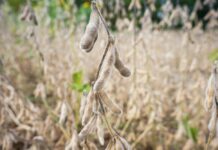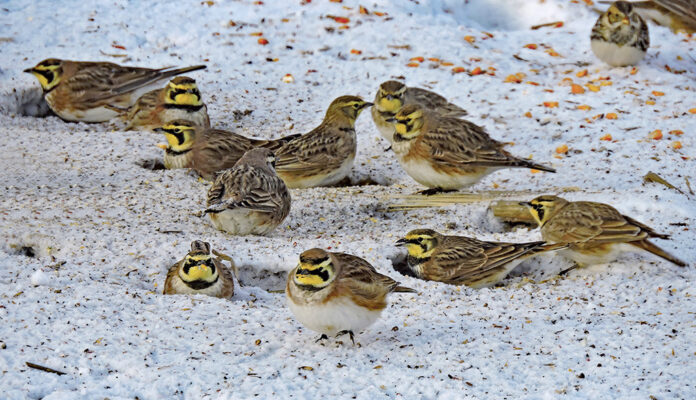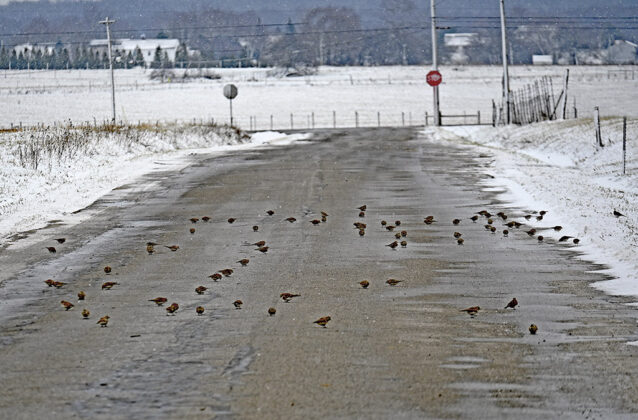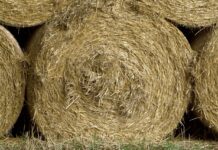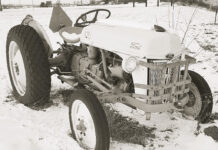If you haven’t noticed by now, I love birds. I’m not one of those fanatics who jumps into my vehicle and goes racing across several states to observe a species that’s never been seen in the U.S., or one that has been completely blown off course by a recent hurricane. However, now that I’m retired, I find myself meandering the rural back roads of my county nearly every day in an effort to quell my incessant need to watch birds.
The southeast corner of Geauga County in northeast Ohio is mostly farmland, due to the fact that it is home to the fourth largest Amish settlement in the United States. The Amish, whose primary lifestyle is farming, have kept this area open with vast pastures for their livestock and agricultural fields, rotated predominantly with corn, soybeans and hay. This combination of habitats provides for some very rewarding avian discoveries, of which I never tire.

One of the daily tasks of Amish farmers involves loading all the manure produced from the livestock in their barn into a spreader or “slinger.” Pulled by a team of draft horses, the ground-driven manure spreader is transported out to a field in need of fertilization. Once in position, the manure is slung out in all directions as the horses stay their course, usually guided in a straight line. The resulting broad swath of feces contains copious amounts of both undigested grains as well as seeds mixed into the straw bedding that has been used to catch the droppings and keep the livestock comfortable. It is this putrid mixture that attracts some very specific bird species, and if the spread is close to the road, offers some up-close viewing to boot.
Horned lark

The main species attracted to these spreads is the horned lark (Eremophila alpestris). This sparrow-sized songbird with a tiny beak, short neck and long body held horizontally to the ground is the only species of lark native to North America. The bird’s plumage sports various shades of rust, sand and buff, while its head is accentuated by a black mask, chest band and forehead patch which trails backward to include 2 small feather tufts poking up near the rear. These “horns” for which the bird is named, can only be deciphered at close range and only on the males. Throats can range from vivid yellow to white depending upon the regions where the birds are found. As in many bird species, female larks are much less showy than the males.
Horned larks prefer open, expansive ground with little or no vegetation including overgrazed pastures and plowed fields. Because their cryptic coloration makes them almost impossible to spot during the warmer months, it is their beautiful song that tattles on their presence. During the spring and summer, I drive slowly through lark habitat with my windows rolled down, hoping to hear their enchanting musical melody, a sequence of sharp, tinkling notes that the males emit, often in flight. Only then, a thorough scrutinization of the landscape will reveal the location of these birds as they busily forage on seeds and insects.
Horned larks are extremely social little birds and as soon as the breeding season is over, they congregate in large flocks, often joined by two other species, snow buntings and Lapland longspurs. When winter arrives, the snowy landscape not only causes manure spreads to become more obvious, but the birds stand out against the backdrop of white, making them easy to observe. The flocks are jittery, often taking flight all at once, circling the field several times before coming to rest again in the same area. Flocks will also alternate between the spreads and the road where they often congregate to consume small bits of grit, which they store in their crops to aid with the digestion of seeds.

A few winters ago, a huge flock of horned larks targeted a cornfield about a quarter mile from our house. Being a bird bander, I just couldn’t resist the opportunity to net a few individuals in an effort to get them banded, measured, weighed and of course, examined up close. With permission granted from the landowner, special “mist nets,” nearly invisible to the birds, were placed across the field and success was almost instant as the unknowing flock flew into them. Unlike other bird species which are sassy when captured, often biting and squawking, the larks were subdued and quiet with perfect manners, flying off joyfully when released to rejoin their flock.
Some people would be surprised to learn that horned larks breed in this area. They are ground-nesters, incubating their eggs among the short grasses where they are extremely well-camouflaged against the earth during warmer months, remaining virtually unnoticed. Yet when winter arrives, as if by magic, they appear in droves, huge flocks traveling the countryside in search of fresh manure spreads, and here in northeast Ohio, they have farmers and their livestock to thank for such a smorgasbord!





